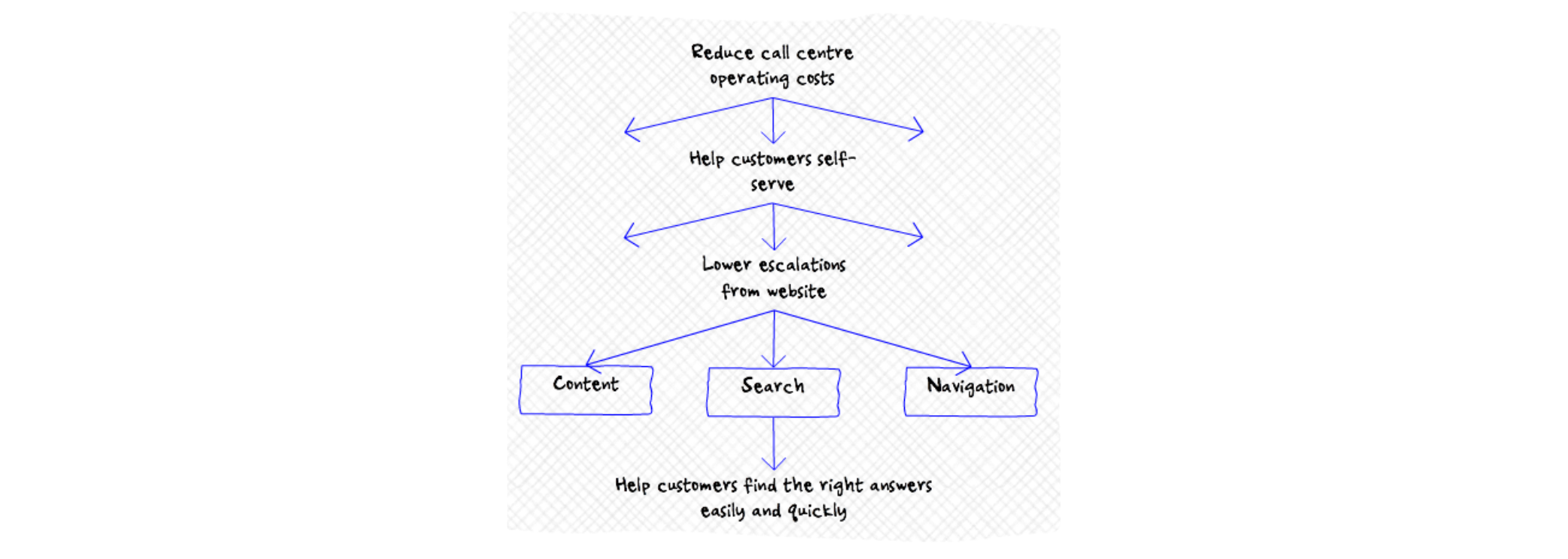1. Goals
If you were in charge of a self-service support website, would you design the search differently if your objective was to lower escalations from the website to the call centre?
Yes, you would.
You would start by identifying the circumstances under which people escalate and then set out to address each situation systematically. Because a self-service website is content-centric, you may investigate content, navigation, and search. You would then define goals for each of them, setting their direction and expectations. This way, the search becomes a player, not a bystander, to lower escalations.
Search is a player, not a bystander in meeting business objectives
In this case, the search goal may be to help customers find the right answers effortlessly so that they can resolve their issues and get on with their jobs. With the goal defined, you now have criteria for selecting the right ideas.
For example, user research reveals that many people are looking for the operating hours of branch offices. You realise that this information is in a PDF document. It means people must first know that the information is in a PDF document, then download it to their computer and finally locate the operating hours for the specific branch.
Will this experience help meet the search goal? No.
A good goal-aligned solution could be to extract the information from the PDF document and offer it right in the search results snippet. Simple, quick, and effortless—this is what one would expect with GenAI.
"Help people find stuff" is not a search goal, nor is “Improve the accuracy of search.” These vague statements don't explicitly state the business's expectations or value.
You can define a good search goal using the format:
Search should by helping .
Here are some examples using the format. Search should:
- Minimise the time it takes to assemble a project team by helping managers quickly find the right people with the right experience in the organisation.
- Maximise rental output of managed properties by helping agents identify price and occupancy changes in neighbourhoods.
- Grow clients' investment portfolios by helping bank representatives quickly analyse and select the right products for their clients.
Some people add targets to goals, such as “lower time to assemble a team by 10%”. You can do this if you already have baseline measurements. If you don't, wait 3-4 months to gather baseline data and include the targets.
Sometimes, you may have to define multiple goals. This is usually when different user groups work on the same collection. For example, students and academics will have different goals when searching for the same medical research database.
Multiple goals increase the number of use cases you must address and the risk of a confusing search experience. But these are the complex realities you'll need to address. Instead of ignoring them and offering general, sterile search experiences, you can use the goals to create custom, fruitful ones.
While a goal may be drawn up in a boardroom, it has to play out on the shop floor. The remaining elements of the search experience are the blueprint for meeting the search goals.
Next up: users.
